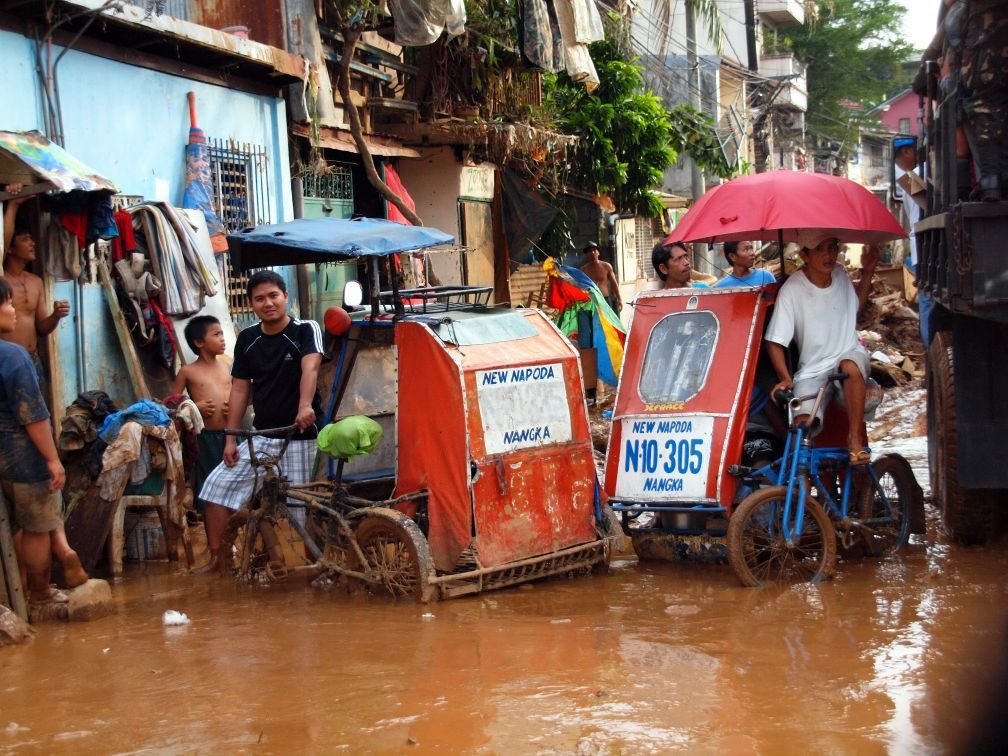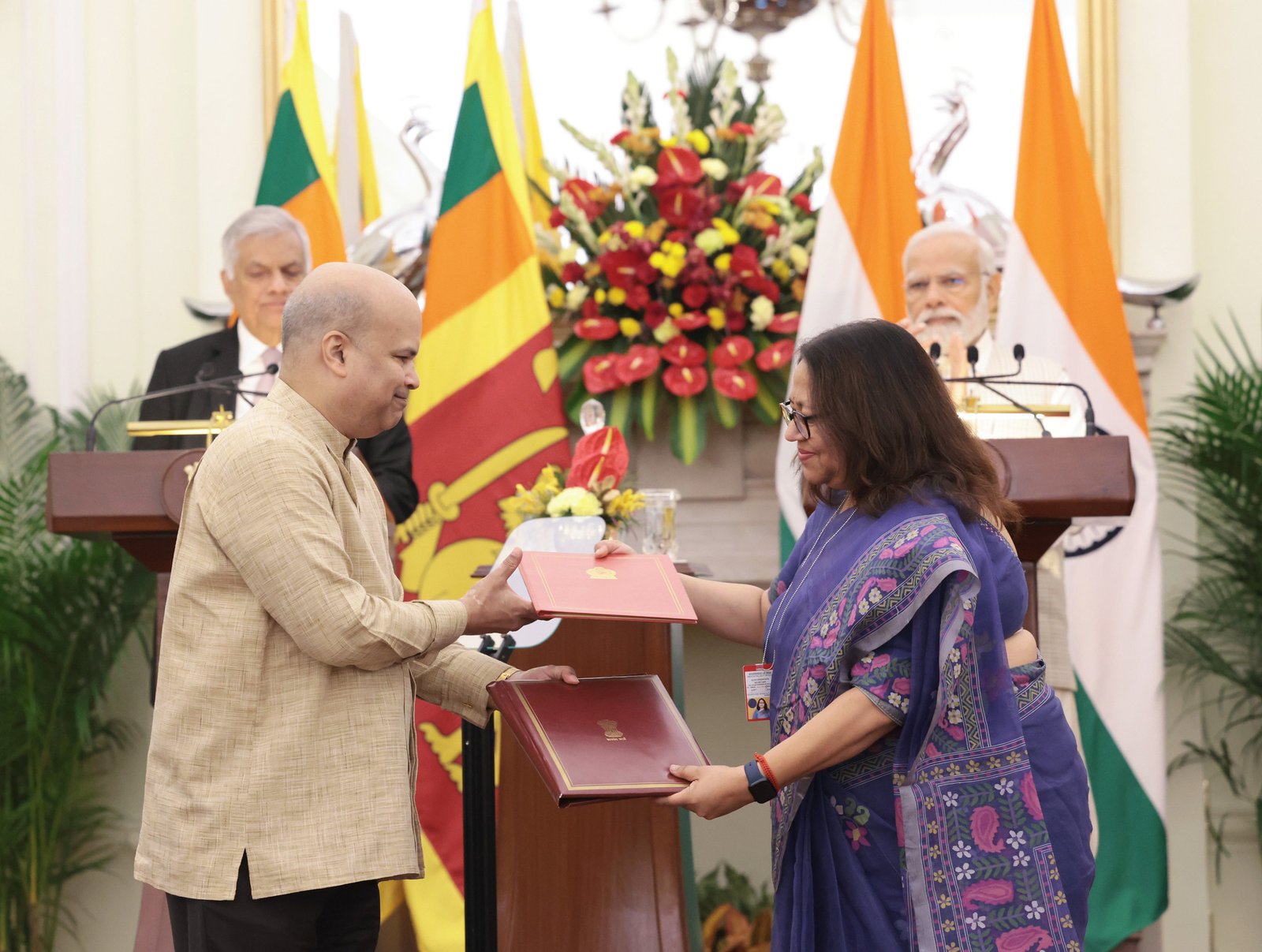Join us as we navigate the currents of contemporary issues in India and all over globe . With the world changing constantly, our coverage of current affairs serves as your compass for success at UPSC, encompassing socio-economic and geopolitical developments.
Bridge This Deficit Between India And Sri Lanka
Context
☞ The president of Sri Lanka recently unveiled a plan to create land connectivity with India.
☞ Two decades prior, the then-prime minister, Mr. Wickremesinghe, put forth the notion of constructing a bridge to connect Talaimanar, Sri Lanka, and Rameswaram, India.
Challenges and Concerns between the Relations
- Economic Integration: In Sri Lanka, resistance from organizations advocating for the rights of Sinhalese Buddhists has always slowed down advancement.
- When India’s Minister of Road Transport and Highways told the Lok Sabha in December 2015 that the Asian Development Bank was prepared to provide ₹24,000 crore for the bridge project, Sri Lanka’s opponents did not respond favorably.
- Regarding Power Grid: Despite the signing of a memorandum of understanding, no electricity transmission occurred, hence the 1970-started power grid project was a failure.
- Regarding Trade: Although the India-Sri Lanka Free Trade Agreement was signed in December 1998, economic and technological cooperation has advanced very slowly.
- The bilateral trade is not doing well, despite having a lot of potential for growth.
- As an illustration, India continues to be the nation with the highest percentage of tourist arrivals (17% of all arrivals), making it a significant source of income for Sri Lanka. However, the potential is far greater.
- The bilateral trade is not doing well, despite having a lot of potential for growth.
Steps that has been Taken
During the past year, the following developments have created momentum:
Flight operations between Chennai and Jaffna have resumed.
The beginning of passenger ferry services between Kankesanthurai and Nagapattinam.
a cooperative venture agreement for self-sufficiency in the dairy industry between the National Dairy Development Board of India, the Gujarat Cooperative Milk Marketing Federation, and Cargills of Sri Lanka.
Way Forward
- Addressing Challenges: It is necessary to talk about and get past the obstacles (Sri Lanka’s enemies).
- Collaboration: It is imperative to concentrate on economically and technologically advantageous joint ventures.
- Enhancing economic and strategic ties is necessary.
- Project Work: Hold projects are being implemented, and new projects like the power grid and land connectivity are being worked on.
News Source: The Hindu
India’s Alarming Fixed Dose Combination Problem
Context
Researchers from Qatar, the UK, and India recently released a new study on antibiotic fixed dose combinations (FDCs) that are illegal or unapproved and are being sold in India in the Journal of Pharmaceutical Policy and Practice.
Findings of the Study:
❖ A Massive Ban & Unapproved FDCs: In 2020, India banned 9.9% of antibiotic FDC sales, while 60.5% of antibiotic FDC sales were unapproved.
❖ Justification for the Prohibition and Unapproval of FDCs: The concerning reason for the significant number of FDCs that are either prohibited or unapproved and contain antibiotics is the rising incidence of antibacterial microbial resistance (AMR) in India.
About Fixed Dose Combinations (FDCs) :
❖ Combination of Multiple Drugs: Since taking one tablet is simpler than taking several, FDCs combine multiple drugs into a single medication, which increases patient compliance.
❖ Importance: It is commonly known that FDCs are highly helpful in enhancing patient compliance, which in turn leads to better treatment outcomes for illnesses like AIDS.
❖ Difficulties: FDCs require cautious testing because mixing medications can lessen their effectiveness or result in harmful interactions (commonly referred to as metabolites). Thus, getting regulatory approval is essential before FDCs are marketed.
Reason of Promotion of FDCs by the Pharma Industry
❖ Avoid Price Control: Drug combinations are exempt from price caps, but individual drugs are. Drug combinations were not previously covered by the Drugs (Prices Control) Order, which is how the government sets the prices of individual medications. For this reason, the pharmaceutical industry uses FDCs as a simple means of getting around the price cap.
❖ For Profit-Making: It provides a rationale for certain businesses to mark up the cost of their medications. Companies can charge more when they create an FDC by marketing it as a brand-new, exclusive product that meets a particular need.
❖ Avoiding Quality Testing: The majority of FDCs do not meet Indian Pharmacopoeia Commission standards.
Therefore, there is no chance of being prosecuted for “not of standard quality” under the 1940 Drugs & Cosmetics Act.
Associated Legislations in India
- Drugs and Cosmetics Act, 1940: Since the first government committee examined and acknowledged the FDC problem in 1978, the issue has been under regulatory scrutiny. During the colonial era, the Drugs and Cosmetics Act, 1940 did not have a mechanism in place to prevent the sale of FDCs.
- Prohibition Provision: In 1982, Parliament amended the law to grant the central government the authority to “prohibit” the production of certain drugs that do not have a valid therapeutic use.
- Approval by DCGI: The Drugs Controller General of India (DCGI), who is in charge of the Central Drugs Standard Control Organization (CDSCO), must receive proof of safety and efficacy from manufacturers of all “new drugs,” including FDCs, according to a 1988 amendment to the regulations made by the central government.
- It was made explicit that State drug controllers could not authorize the manufacture of new drugs unless the DCGI had given its approval for their safety and effectiveness.
Concerns for India
- Acceleration of Antimicrobial Resistance Cases: Overuse of unapproved and illogical antibiotic FDCs can hasten the development of antimicrobial resistance in India, which will have a detrimental effect on the country’s capacity to treat infections.
- Inadequacy in Regulation: The prolonged incapacity to suppress this behavior exposes obvious deficiencies and incapacity in India’s medication regulation structure.
- Lax License Approval: State drug controllers openly break the law, continuing to grant manufacturing licenses for FDCs that have not been approved by DCGI.
- Random prohibitions on particular FDCs act like a game of whack-a-mole, with manufacturers countering with comparable substitute FDCs.
- Judicial Inconsistencies: Manufacturers are also able to sell more FDCs due to inconsistent interpretations of DCGI’s Section 26A FDC banning authority.
The Way Forwards
- Tightness in the Licensing Procedure
- Enforcing laws and regulations strictly
- Simplifying Complicated Legal Cases
- Doctors who prescribe FDCs in a sensible manner
News Source: The Hindu
A City under Water – Urban Flood

Context
☞ Recently, Cyclone Michaung caused a 16-hour delay for roughly 100 km off the coast of Chennai.
☞ It has resulted in widespread flooding and torrential rains, seriously damaging infrastructure and upsetting livelihoods.
Urban Flooding
It is the large-scale submersion of normally dry areas by water caused by sudden, intense rainfall, overflowing rivers or lakes, melting snow, or unusually high tides.
Causes of Urban Flooding in India
- Meteorological factors: Thunderstorms, cyclonic storms, and excessive rainfall.
- Hydrological Factors: When surface runoff exceeds infiltration rate, flood risk occurs. Flooding and increased runoff are caused by decreased infiltration.
- Elements influencing the Infiltration Rates: Soil type, each one’s capacity to hold water, vegetation cover (which slows water flow and boosts infiltration), etc.
- Because of paved roads and a lack of vegetation cover, urbanization slows down the rate of infiltration.
- Elements influencing the Infiltration Rates: Soil type, each one’s capacity to hold water, vegetation cover (which slows water flow and boosts infiltration), etc.
- Anthropogenic/Human Factors: As a result of urbanization, construction has occurred on lake and river beds as well as encroachment upon water bodies.
- Because of this obstruction of the natural flow of water, these areas get flooded during periods of heavy rainfall.
- Example: The Dakshina Pinakini River in Bengaluru was thought to be extinct because it had not flowed for thirty years.With heavy rainfall it was flooded and damaged buildings in its path.
- Inadequate Infrastructure: The majority of Indian cities have experienced haphazard urbanization, and as a result, infrastructure has not kept up with population growth. For example, storm water drainage systems are ill-equipped to account for the loss of natural runoff brought on by construction.
- The drainage system in Bengaluru is inadequate to manage even moderate rainfall events, according to the 2013 Karnataka State Action Plan on Climate Change.
- Inadequate Maintenance and Cleaning of Drains: This causes obstructions and waterlogging.
Impacts of Urban Flooding
- Economic Loss: Both the state and the federal governments are impacted when vital infrastructure in large cities is damaged.
- As an illustration, the 2005 Mumbai flood caused losses exceeding $100 million by disrupting the operations of the stock exchanges (BSE and NSE) and shutting down financial services.
- Effect on Day-to-Day Activities: Residents’ daily lives are impacted by power and transportation disruptions.
- Impact on Livelihood: The ability to make a living is a major obstacle for those with lower incomes, and urban flooding has a direct impact on this.
- The urban poor are disproportionately vulnerable to urban floods because they typically reside in slums that are most at risk.
- Property and Life Losses: Severe incidents result in significant losses of both.
- Dangerous Chemical and Fuel Dispersions into Water: Floodwaters from industrial facilities or storage sites may pose a serious health risk.
- Both untreated sewage and toxic chemicals can seriously endanger public health and the water supply.
- Epidemics can spread as a result of infection spreading after a flood.
The Way Forward
- Techniques for water-sensitive urban planning and design are of utmost importance.
- City master plans ought to require vulnerability analyses and risk assessments.
- It is necessary to create an extensive database listing all urban wetlands and water bodies.
- It is necessary to identify and liberate river, lake, and other water channel catchments’ protected areas from encroachment.
- It is necessary to restore natural water bodies and flood plains.
- The utilization of the Sponge Cities concept.
- Sponge cities are a solution to the summertime water scarcity and urban flooding issues.
Sponge City
There is a particular kind of city that is intended to absorb rainwater like a sponge. To get to the aquifers, the water is absorbed and given time to naturally filter through the soil. The city’s water requirements are partially met by the aquifer recharge.
In order to naturally retain and filter water, the Sponge city features ponds scattered throughout neighborhoods, contiguous open green spaces, and linked waterways and channels.
Conclusion
❖ An immediate solution is needed because increased frequency of heavy rainfall has increased the risk of flooding throughout India, especially in urban areas, according to the Climate Change Assessment Report (2020).
❖ Collaborative Approach: Union, State, and Local Governments, as well as the people, must work together to address the problem of urban floods.
News Source: The Hindu
